Treatment We Provide


A dental implant is an artificial tooth root that an implant specialist places into your jaw to hold a replacement tooth or bridge. Dental implants are an ideal option for people in good general oral health who have lost a tooth or teeth due to periodontal disease, an injury, or some other reason. While high-tech in nature, dental implants are actually more tooth-saving than traditional bridgework, since implants do not rely on neighboring teeth for support.

Root canal is a treatment to repair and save a badly damaged or infected tooth instead of removing it. The procedure involves removing the damaged area of the tooth (the pulp) and cleaning and disinfecting it, then filling and sealing it. The common causes affecting the pulp are a cracked tooth, a deep cavity, repeated dental treatment to the tooth or trauma to it. The term "root canal" comes from cleaning of the canals inside the tooth's root.Root canal treatment consists of a number of steps that take place over several office visits, depending on the situation.
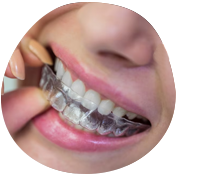
If your teeth are stained, discolored, worn, chipped, broken, misaligned, misshapen, or have gaps between them, modern cosmetic dentistry can give you a better smile. A “smile makeover” improves the appearance of your smile through one or more cosmetic dentistry procedures. Cosmetic dentists work with you to develop a treatment plan.
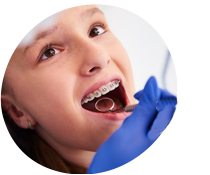
Orthodontic treatment involves prevention & correction of misaligned teeth & jaws for good dental health & cosmetic reasons. Severely misaligned teeth can cause numerous problems likes snoring, sleep apnea & other breathing problems. Besides dental irregularities may cause insecurity & low self esteem, which can affect a person's ability to chew & speak.

A dental crown is a fixed prosthetic “cap” that fits over a damaged tooth and restores it to its normal appearance and function. It can be molded from several different materials, including ceramics, porcelain-and-metal, gold, and resin. Crowns duplicate the shape and size of the original tooth and effectively replace the top of a damaged tooth.
Dental bridges are meant to “bridge the gap” created when one or more teeth are missing from a mouth. Bridges consist of at least two dental abutment crowns and at least one false tooth (called a “pontic”), all created together as one solid piece. The pontic fits into the area where the tooth is missing. The abutment crowns fit onto the teeth on either side of the gap to support and anchor the pontic. Ultimately, bridges fill in missing teeth and help replace healthy tooth structure after damage.
The procedure refers to the restoration of natural teeth that have been damaged, decayed or lost. Their benefits are that they restore tooth function, shape or alignment, and appearance. The use of crowns and bridges also avoid shifting teeth that can happen after a tooth is lost.

Dental veneers are a possible solution to help you achieve the look you desire. They are a popular choice for those with chipped teeth, a gap between teeth, or misshaped teeth.Dental veneers are thin covers that adhere to teeth to give teeth a more classically shaped look. Veneers are thin coverings that are placed over the front (visible) part of the tooth. They look like natural teeth.

Our smile is the mirror of your soul, but the pain in your tooth will drop down the curtain all in an instance. We help you bring your smile back on your face with a painless Tooth Extraction.
One who once had a toothache knows how terrifying a toothache can be. Tooth pain often prevents you from functioning normally.
1. Anaesthetics: Before the extraction, you will be given an anaesthetic to reduce your discomfort. Your mouth will remain numb for a few hours after the extraction. While your mouth is numb,you’ll want to be careful not to bite your cheek,lip or tongue. After the extraction, do not eat any foods that require chewing while your mouth is numb. The numbness will go away within a few hours.
2. Bleeding: After extraction a guaze pack is place on the extraction site to limit the bleeding. This will also help a blood clot to form,which is necessary for normal healing. This guaze pack should be left in place for 30 to 45 minutes after you leave the dentist’s clinic. Donot chew on the pack. There may be some bleeding or oozing after pack is removed.
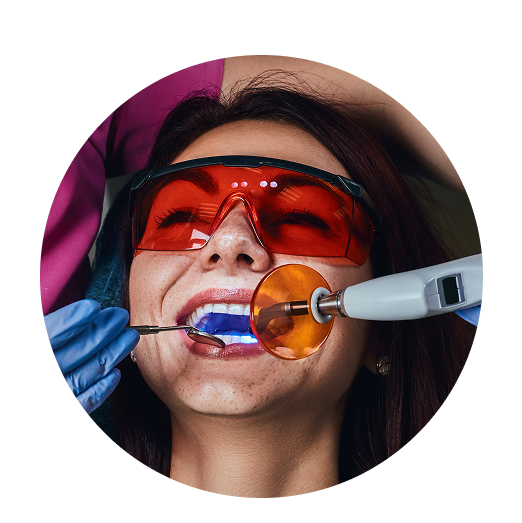
Dentist routinely provide scaling, with or without polishing (also commonly called “dental cleaning”), to patients attending their practices.
1. Scaling is the removal of plaque, calculus (or tartar), debris and staining from the crown and root surfaces of the teeth. POLISHING is the mechanical removal of any residual extrinsic stains and deposits, typically undertaken by using a rubber cup or bristle brush loaded with a prophylaxis paste. The one of the most commonly used polishing method is prophylaxis paste used with rotary rubber cup/brush. The abrasive properties of paste vary by content and size of paste.
2. Plaque - induced periodontal disease includes gingivitis and periodontitis. Gingivitis is a reversible gingival inflammation without loss of connective tissue attachment. Gingivitis usually considered as a precursor to periodontitis in some individuals. Periodontitis is defined as the presence of gingival inflammation at sites where there has been a pathological loss of attachment.
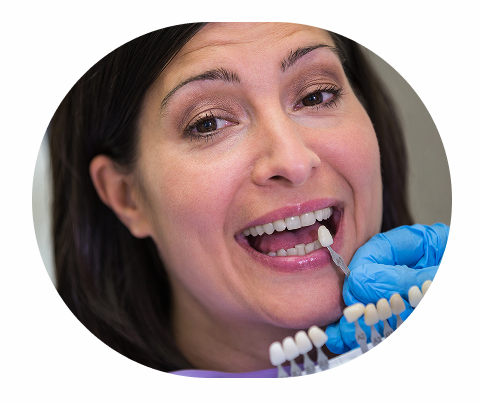
THE glossary of trosthodontics terms define prosthodontic as that branch of dental art and science pertaining to the restoration and maintenance of oral function by the replacement Of missing teeth and structure by artificial device. Treatment modalities used in DENTURE prosthodontics include THE COMPLETE DENTURE which is used to restore the completely edentulous mouth,the REMOVABLE PARTIAL DENTURE for patient with some natural teeth remaining, and COMBINATION OF THESE TWO in which one jaw(usually the maxilla) is completely edentulous and the mandible is partially edentulous.
The base of the upper denture cover the palate(The Roof Of The Mouth). When the base of upper denture rest against the gums and palate, it makes a seal to hold the denture in place. the lower denture has a horseshoe shape so there is room for the tongue and muscle attachment. it rest on the gum and bone tissue of the dental ridge. a thin film of saliva hold it in place. the cheek muscle and tongue also help hold the lower denture in place.
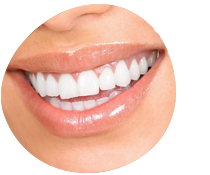
Tooth whitening can be a very effective way of lightening the natural colour of your teeth without removing any of the tooth surface. It cannot make a complete colour change, but it may lighten the existing shade.
Tooth discoloration is one of the most commonly reported complaints in patients seeking aesthetic treatment. Variation in tooth color can be influenced by intrinsic and extrinsic factors, ranging from chemical ingestion to consumption of foods that cause staining.
The Application Of Bleaching Gel To Vital Teeth Remove All These Stains and Make Teeth Brighter Or White In Colour. Teeth whitening done by dentist can get teeth brighter faster. The bleaching solution is usually much stronger than at-home kits.

If your teeth are stained, discolored, worn, chipped, broken, misaligned, misshapen, or have gaps between them, modern cosmetic dentistry can give you a better smile. A “smile makeover” improves the appearance of your smile through one or more cosmetic dentistry procedures. Cosmetic dentists work with you to develop a treatment plan.
Oral health is a very important aspect to ensure a healthy future therefore oral health for children is a worthy concern regardless of child’s nationality, ethnicity or geographic location. Healthy teeth are important to your child's overall health. From the time your child is born, there are things you can do to promote healthy teeth and prevent cavities. For babies, you should clean teeth with a soft, clean cloth or baby's toothbrush. Avoid putting the baby to bed with a bottle and check teeth regularly for spots or stains.

Dental restoration is the most commonly administered dental treatment. These restorations are subjected to dynamic conditions in oral cavity, are likely to fail and need replacement. Ideal restorative material should pass two tests- Longitivity and Esthetics. Longitivity of the restorative material depends on three major factors- first is Patient’s factors, second is Operator`s skills and last is the Restorative material itself. Composite (componere = to combine) is the universally used tooth-colored direct restorative material. Survival of composite was influenced significantly by type of material. Light (LASER)cured microfilled and densified filled materials being more successful between 6.5 years and 8.5 years, whereas the older autopolymerising macrofilled composites were most successful up to 6.5 years. Composite micro- mechanically bonds to the tooth and restorations do not typically require tooth preparations as precise as amalgam and inlay castings. Conservative removal of tooth structure supports the restoration better. Composite resins are indispensable in anterior esthetic zones but also are viable alternative to amalgam for posterior restorations as well1.. Though they are more technique sensitive 2 but offer a better seal and meet the patient's demands for esthetics.